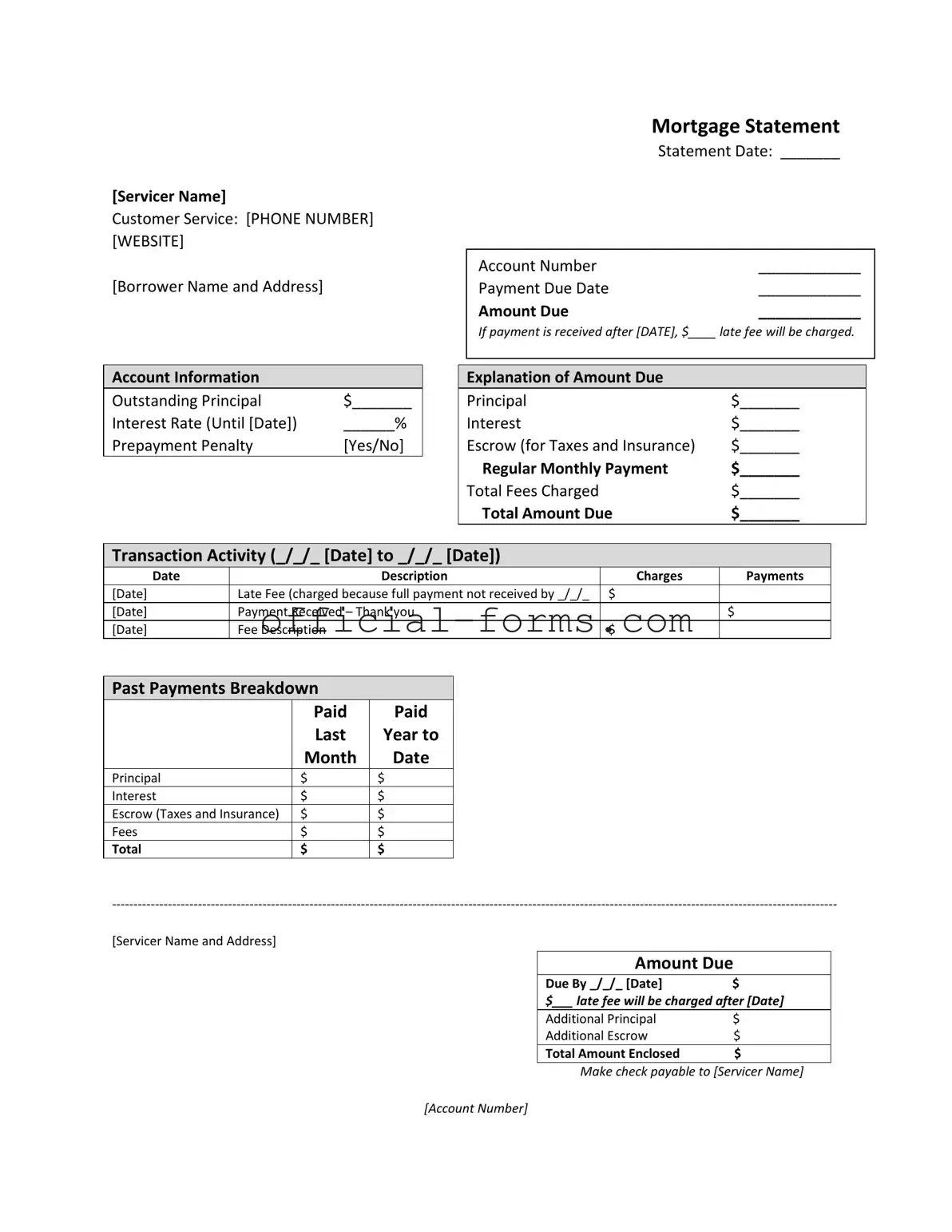The Mortgage Statement form serves as a crucial document for homeowners, providing a detailed overview of their mortgage account. It includes essential information such as the servicer's name, customer service contact details, and the borrower's name and address. Key dates, including the statement date, payment due date, and account number, are prominently displayed. The form outlines the amount due and specifies any late fees that may apply if payment is not received on time. Account information is clearly detailed, showing the outstanding principal, interest rate, and whether a prepayment penalty applies. A breakdown of the amount due is provided, including principal, interest, escrow for taxes and insurance, and total fees charged. Transaction activity is listed to give borrowers insight into their payment history, including any late fees incurred and payments received. Additionally, the form contains important messages regarding partial payments and delinquency notices, alerting borrowers to the consequences of late payments. For those facing financial difficulties, the statement directs them to resources for mortgage counseling or assistance, ensuring that help is available when needed.
